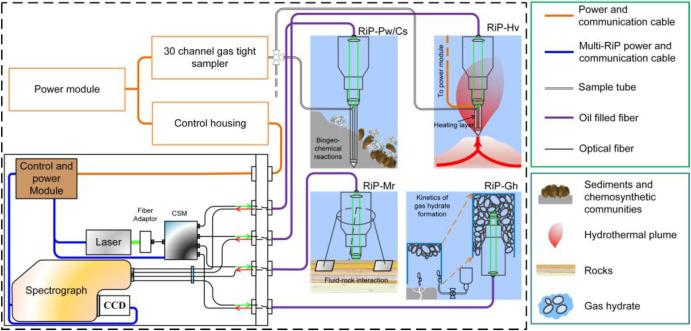China has deployed its first deep-sea in-situ spectroscopy laboratory on the seabed in the South China Sea, which will enable long-term scientific research in the area.
The unscrewed laboratory can be operated regularly in deep-sea cold seeps and hydrothermal vent areas, and conduct long-term and multi-target observation, data acquisition and controlled experiments for the purpose of studying the effects of cold seep and hydrothermal vent on marine ecology and global climate change and to explore scientific hypotheses.
Zhang Xin, a researcher at the Institute of Oceanology under the Chinese Academy of Sciences, said that the laboratory could withstand pressure of up to 4,500 meters at the bottom of the sea, covering most of the South China Sea.
It could be used to study deep-sea sulfides and minerals, with which could be important resources in the future, Zhang added.

Schematic diagram of the conceptual design of Multi-RiPs and its application model for in-situ detection in deep-sea cold seeps and hydrothermal vents. /Institute of Oceanology, CAS
Schematic diagram of the conceptual design of Multi-RiPs and its application model for in-situ detection in deep-sea cold seeps and hydrothermal vents. /Institute of Oceanology, CAS
A novel multi-channel Raman insertion probe system (Multi-RiPs), developed by the institute, was installed in the laboratory.
With the spectra generated by laser, the system will be used to detect major chemical components of substances in extreme deep-sea environments, such as the structure and composition of combustible ice.
Read More:
Chinese scientific research vessel completes deployment of deep-sea experiment station
(Cover: Multi-RiPs deployed by a long-term ocean observation platform in the cold seep area of the South China Sea for in-situ detection in 2022. /CMG)